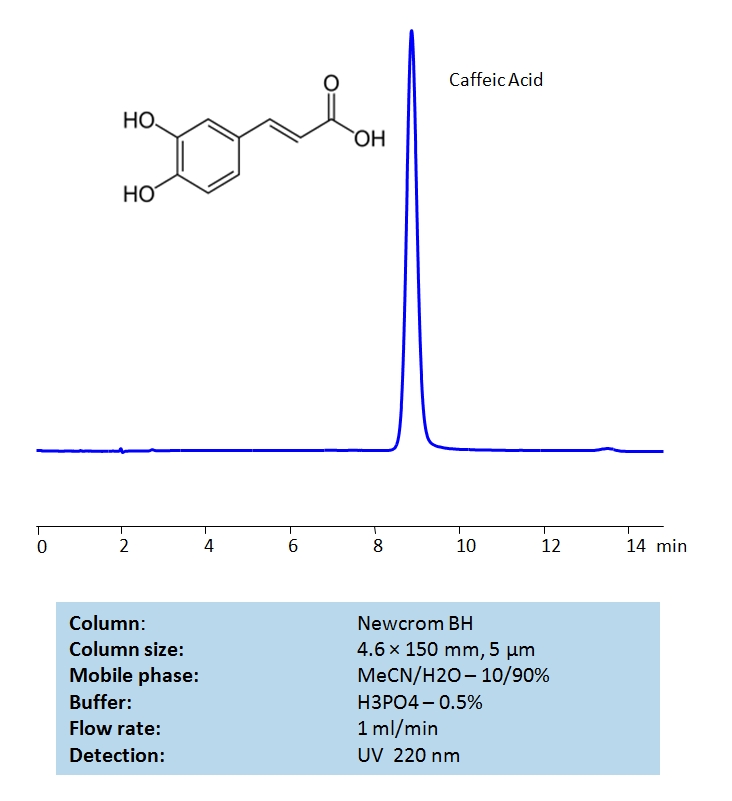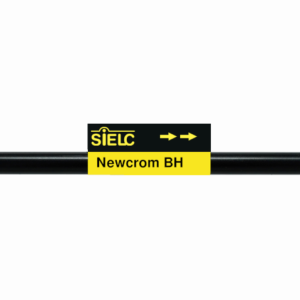HPLC Method for Analysis of Caffeic acid on Newcrom BH Column by SIELC Technologies
Caffeic acid is a hydroxycinnamic acid, a naturally occurring organic compound.
Caffeic acid is a type of phenolic acid. It is found in beverages (such as wine, tea, coffee, and apple juice) and food (such as tomatoes, carrots, strawberries, blueberries, and wheat). Caffeic acid, like other polyphenols, is believed to exhibit many health benefits associated with its antioxidant properties, including the prevention of inflammation, cancer, neurodegenerative diseases, and diabetes.
Caffeic acid is an organic compound that is significant in the fields of pharmacology and biochemistry.
Chemical Structure:
Caffeic acid is a hydroxycinnamic acid, a type of phenolic acid.
Its molecular formula is C9H8O4.
The structure features a catechol group (a benzene ring with two hydroxyl groups) and a propenoic acid moiety.
Natural Occurrence:
It’s found in all plants because it’s a key intermediate in the biosynthesis of lignin.
Rich sources include coffee, wine, olive oil, fruits, vegetables, and some traditional medicinal herbs.
Biological Activities:
Caffeic acid has antioxidant properties, helping to protect cells against oxidative stress.
It exhibits anti-inflammatory, anticarcinogenic, and antiviral activities.
The compound may also have neuroprotective effects and play a role in reducing cardiovascular diseases.
Uses in Research and Industry:
In research, it’s often studied for its potential health benefits.
In industry, it can be used as a precursor for the synthesis of more complex compounds.
Safety and Toxicity:
Generally, it is considered safe at dietary levels, but like all compounds, it can be toxic at high concentrations.
Caffeic acid is a focus of interest for its potential health benefits and roles in various plant-based phenomena.
Caffeic Acid can be detected at low UV. Using Newcrom BH mixed-mode column and a mobile phase consisting of acetonitrile (ACN), and water with phosphoric acid (H3PO4) buffer, caffeic acid can be retained and UV detected at 220nm.
| Column | Newcrom BH, 4.6×150 mm, 5 µm, 100A |
| Mobile Phase | MeCN/H2O – 10/90% |
| Buffer | H3PO4 – 0.5% |
| Flow Rate | 1.0 ml/min |
| Detection | 220 nm |
| Class of Compounds | Acid |
| Analyzing Compounds | Caffeic Acid |
Application Column
Newcrom BH
The Newcrom columns are a family of reverse-phase-based columns. Newcrom A, AH, B, and BH are all mixed-mode columns with either positive or negative ion-pairing groups attached to either short (25 Å) or long (100 Å) ligand chains. Newcrom R1 is a special reverse-phase column with low silanol activity.
Select options





